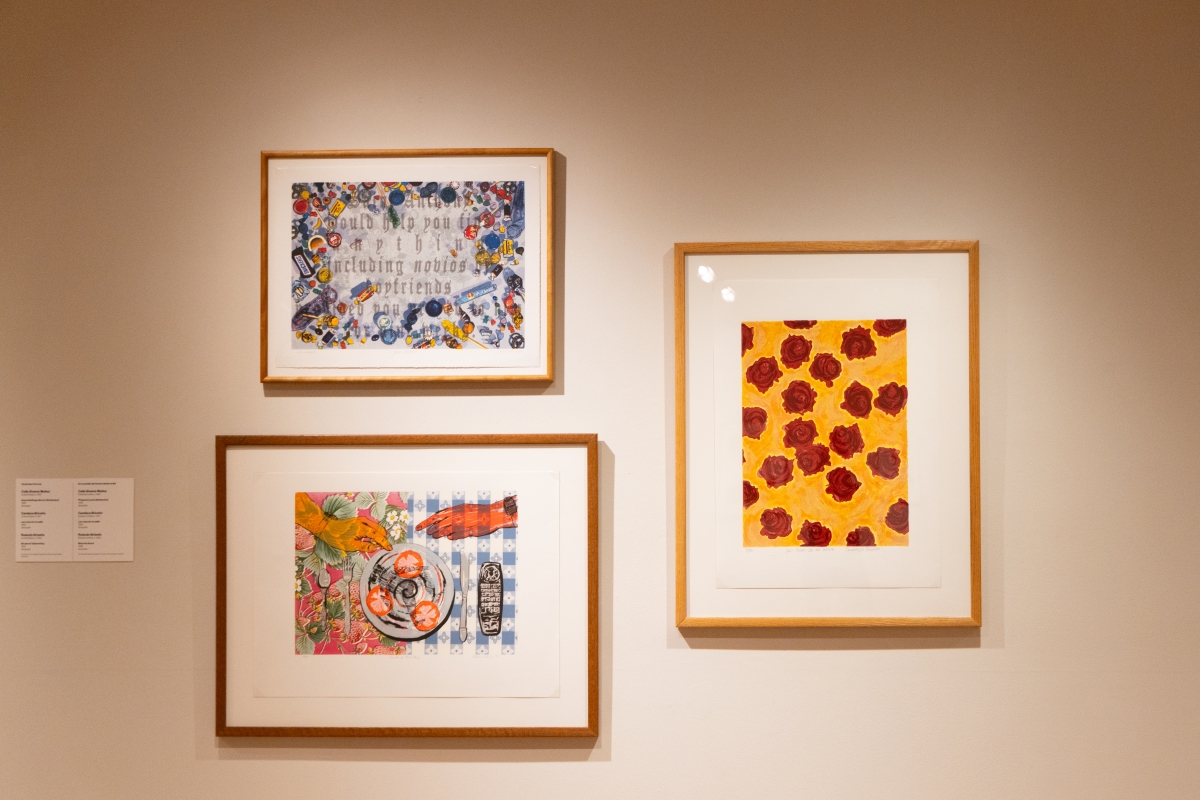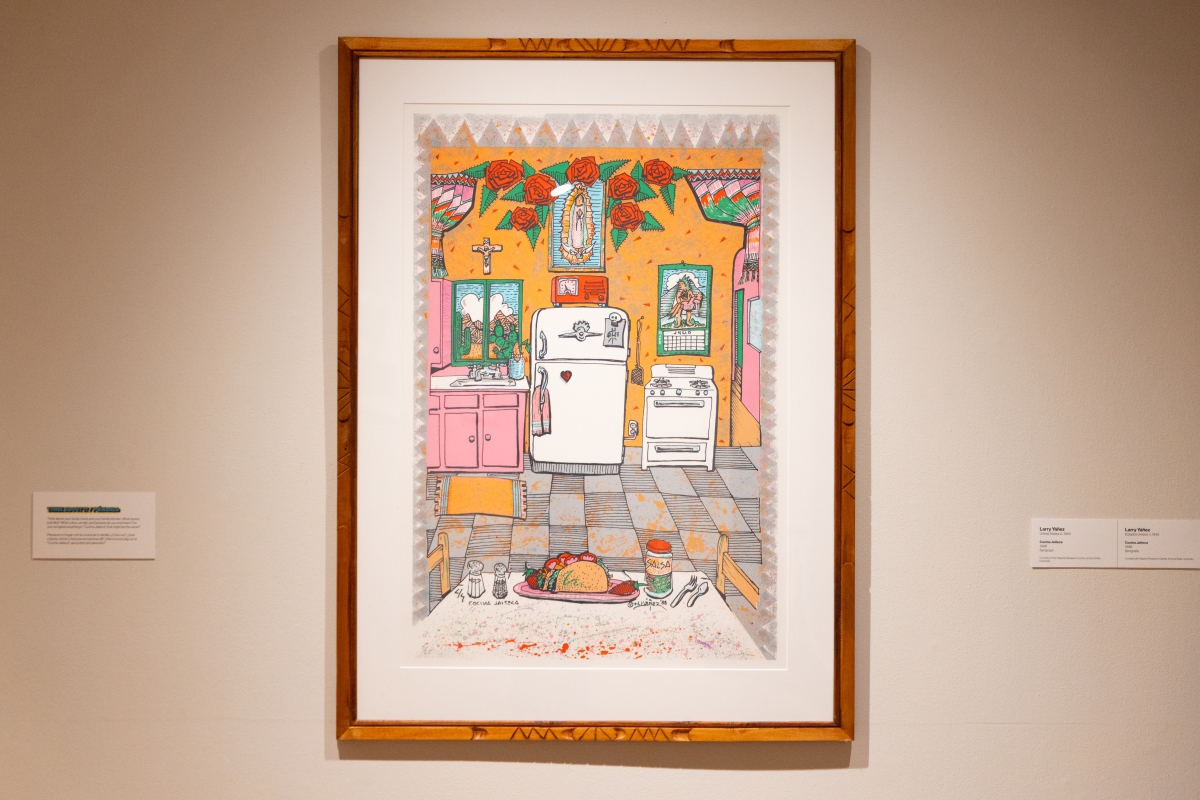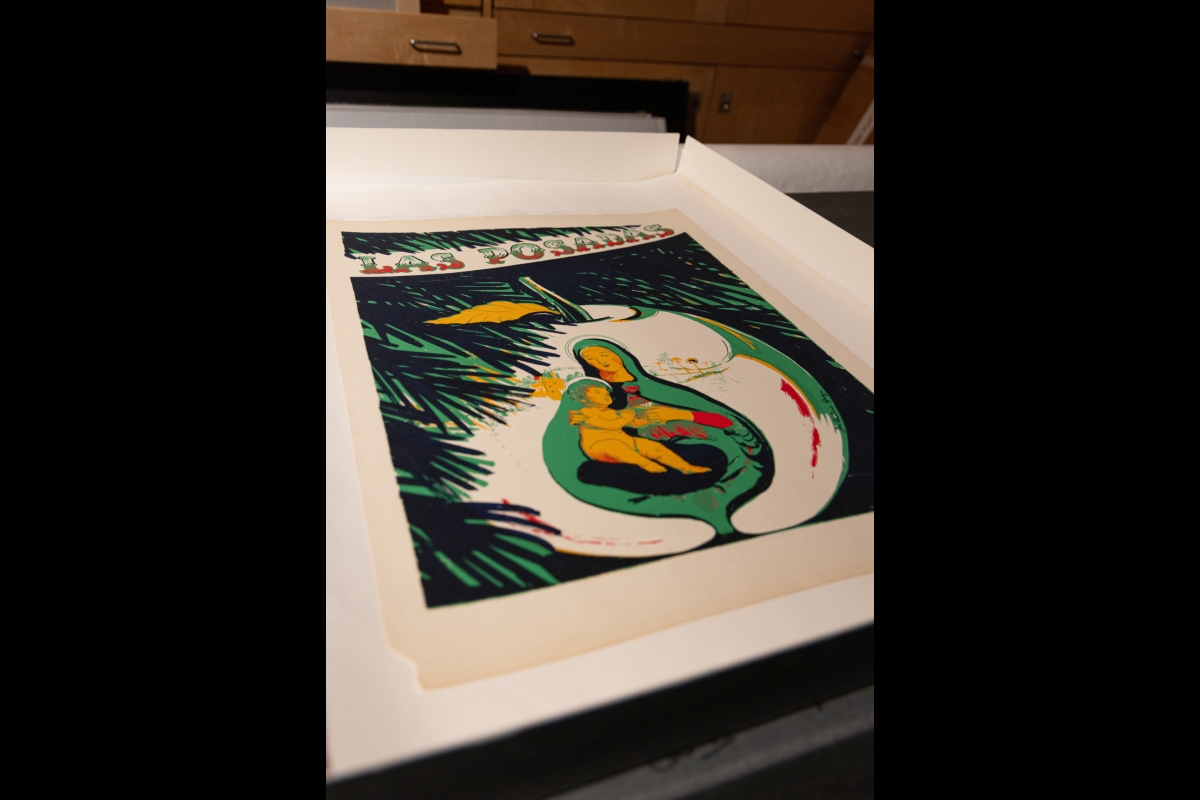ASU’s Hispanic Research Center relaunches with open house, new commitment to research, community
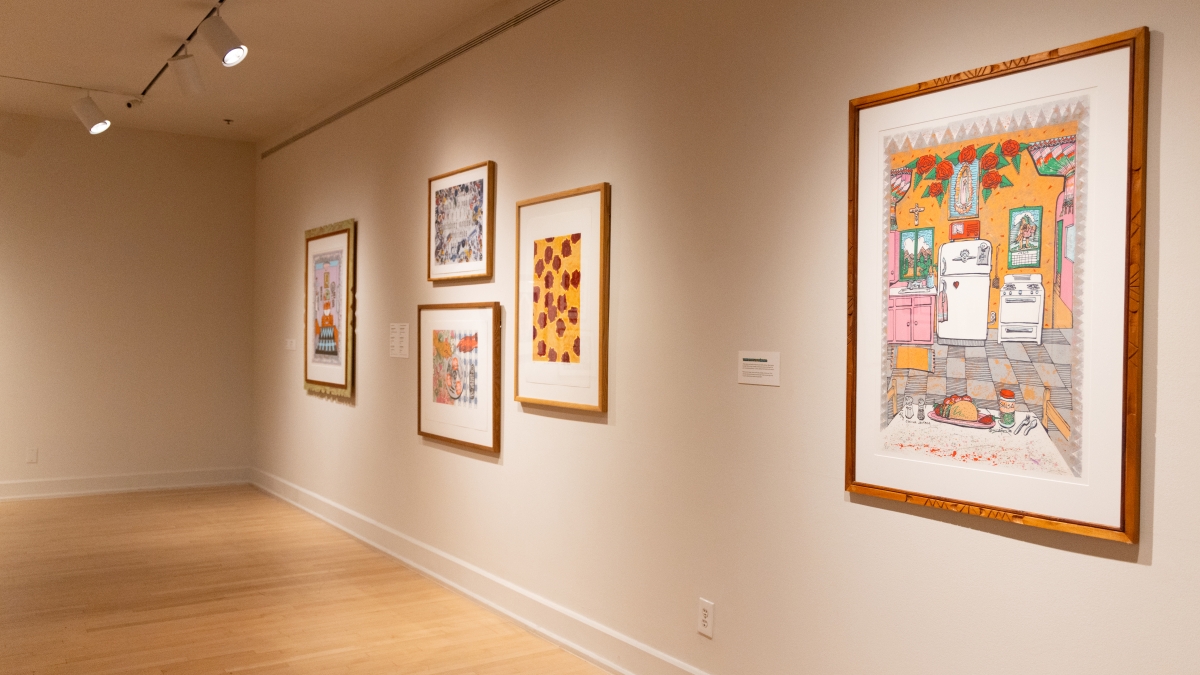
Photo of the print display at the ASU Art Museum courtesy of the Hispanic Research Center.
Some say art is a form of storytelling made to be passed down from generation to generation. Thanks to the long-standing efforts of Arizona State University’s Hispanic Research Center (HRC) to collect and preserve cultural artwork, stories of Chicano heritage have been kept alive for generations.
And now, through new grants and partnerships, that work is poised to continue.
With seed funding from the Humanities Institute at ASU, the HRC will soon be releasing several videos dedicated to breaking down the meaning behind its commissioned lithographs. The seed funding also supported the creation of ArcGIS StoryMaps, which allows viewers to virtually learn about some of the lithographs in the HRC’s collection through the perspective of JoAnna Reyes, an assistant professor at ASU's School of Art.
“I think an experience a lot of people have when they're looking at artwork is that they are excited to look at something really interesting that is layered with lots of meaning and they can start doing some analysis on their own,” said Anita Huízar-Hernández, the HRC’s associate director. “But they're also eager to find resources to better understand what it is they're looking at, so that's a goal of ours here, too.”
To further celebrate its collection and its broader mission, the HRC will host an open house on Thursday, Oct. 17, for students, faculty, staff and the public to spread the word about its current and future activities. There, more art will be available to view along with the opportunity to purchase books from the HRC’s Bilingual Press, as well as opportunities to engage with Hispanic/Latino-themed music, food and culture.
“The whole point of the open house and the relaunch is that we have a new focus. We have a new commitment to research and to not only be interdisciplinary, but to be a community partner, be a partner across different entities and units,” said Stella Rouse, the HRC’s director. “Anybody who is interested in anything that has to do with the Hispanic community, we're here not only as a resource but also as a collaborative partner to work toward advancing what people want to study and promote.”
Alongside the lithograph videos, the HRC is collaborating with the ASU Art Museum to display parts of its collection on a larger scale. The exhibition, "Chicano/a/x Prints and Graphics: Selections from the Hispanic Research Center’s Collection,1980–2010," features over 30 artists paying homage to different perspectives of Mexican Americans’ experiences. The collection will be on view until June 2025, with a second wave of art being displayed next spring.
The exhibit came to life with the help of Santiago Moratto, the HRC's curator of art and community outreach specialist. He selected several pieces that have become important staples in Chicano history.
“The themes present in the collection are integral to Hispanic culture in this country, and at the HRC, we believe in the importance of recognizing and celebrating the diversity that exists within Hispanic cultures in the U.S.,” Moratto said.
The prints and paintings are not the only art the HRC hopes to preserve. The Bilingual Press was founded by the center’s former director, Gary Keller, in 1973 and features a collection of books, research and poetry from Chicano authors. It served as a way for their voice to be heard when most publishers weren’t willing to take on their stories.
“When the Bilingual Press was founded, the Chicano/a/xThe "x" suffix replaces the "o/a" ending of Chicano and Chicana, which are typical of grammatical gender in Spanish, for a gender-neutral alternative. population was starting to get access to college in large numbers,” Huízar-Hernández said. “They wanted to write about their experiences and traditional presses were not, and arguably are still not, interested in publishing Chicano/a/x authors in big numbers. So they created their own journals and presses so that they could get their stories out there. The Bilingual Press was part of that.”
With its new online store, books associated with the press are more accessible than ever. Beyond just immediately available books, the mission is to keep the historical memory of publications out of print alive through archives the center is currently working on.
The HRC’s collection began to take shape when Keller began curating pieces of art depicting Chicano lived experiences and history in the 1970s. Since its inception, the collection has become one of the largest in Arizona and among public institutions across the United States. The center hopes to continue expanding its collection while showcasing its importance to ASU and beyond.
A unique aspect of the HRC’s collection is the amount of Arizona-based artists it hosts. Oftentimes, Chicano history has been told in the settings of Texas, California or New Mexico, with Arizona falling short in receiving a lot of attention, despite all the work artists have contributed to in relaying history related to the state. The HRC’s goal of putting these pieces on display is to bridge generational gaps between artists and storytelling. The center also aims to attract more research on the art in the future.
“In addition to the art itself, we also have substantial archival materials about the artists and their artistic practice. We want as many researchers as possible to be able to have access to those materials so art historians and cultural critics like myself can contextualize what these pieces show us about the history of the Chicano/a/x community,” Huízar-Hernández said.
More Arts, humanities and education
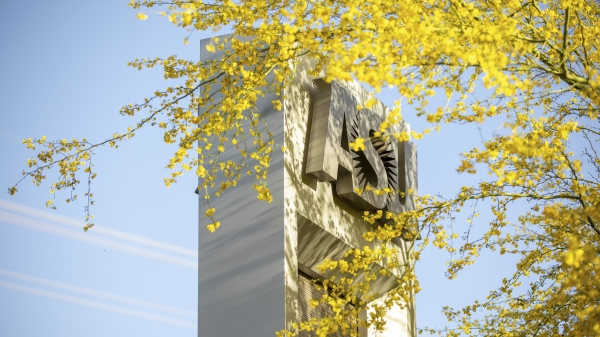
ASU researchers awarded $1M grant to cultivate civic virtues in Arizona public universities
Principled Innovation is the backbone behind a recent $1 million dollar grant award to a team of Arizona State University researchers for their project, Cultivating Civic Virtues Through Action.…
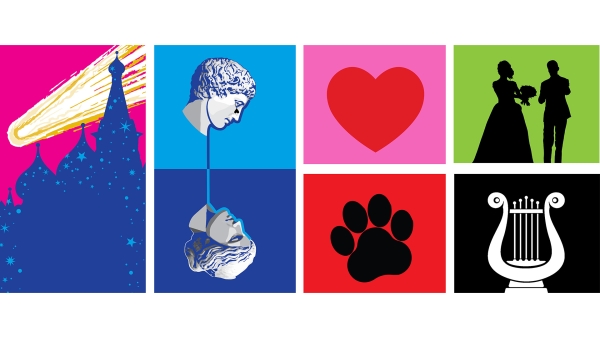
ASU Music Theatre and Opera season spotlights composers, students and masterworks
The 2024–25 ASU Music Theatre and Opera season features projects that illuminate contemporary composers and writers, student-led work, and iconic masterworks that push the boundaries of opera…
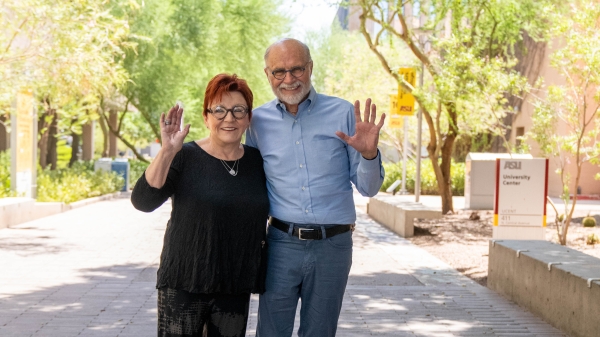
Arizona couple donate $10M to Arizona PBS, the largest gift in the station's history
Sue Hart-Wadley and Searle Wadley have always loved PBS for its educational, entertaining and inspirational programming. After years of learning from its variety of offerings, the Arizona couple are…
